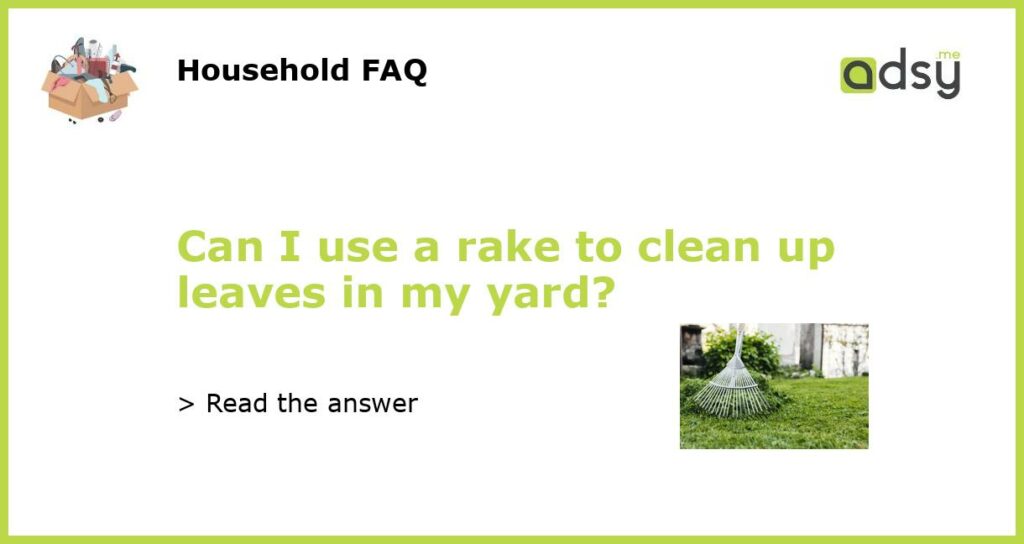Yes, you can use a rake to clean up leaves in your yard
Using a rake to clean up leaves in your yard is a common and effective method that many people use. Raking leaves not only helps keep your yard neat and tidy, but it also has several benefits for your lawn’s health. In this article, we will discuss why using a rake is a good option, the proper technique for raking leaves, and some alternative tools you can use to make the job easier.
The benefits of using a rake
Using a rake to clean up leaves in your yard has several benefits. First and foremost, it is a cost-effective option. Rakes are relatively inexpensive compared to other tools such as leaf blowers or vacuum systems. Secondly, using a rake allows you to get some physical exercise while cleaning your yard. Raking leaves can be a great workout for your arms, back, and core muscles. Lastly, raking leaves is an eco-friendly option. Unlike leaf blowers that use gasoline or electric-powered machines that consume energy, raking leaves only requires your own physical effort.
The proper technique for raking leaves
To effectively clean up leaves in your yard, it is important to use the proper technique when raking. Start by choosing the right rake for the job. There are various types of rakes available, but a fan rake or a leaf rake with flexible tines are recommended for leaf cleanup. Once you have the right rake, follow these steps:
- Rake in one direction: Begin by raking the leaves in one direction, such as towards a designated leaf pile or a compost area. This will make the job more efficient and prevent you from scattering leaves around.
- Use a controlled sweeping motion: Use a controlled sweeping motion with the rake to gather the leaves into a pile. Start from the farthest corner of your yard and work your way towards the pile.
- Avoid putting too much strain on your back: Instead of using just your arms, engage your core and use your legs to generate power when raking. This will help prevent back strain.
- Take breaks when needed: Raking leaves can be physically demanding, so make sure to take breaks when necessary to avoid overexertion.
- Dispose of the leaves properly: Once you have gathered all the leaves into a pile, you can bag them up for curbside collection or use them as compost to enrich your soil.
Alternative tools for leaf cleanup
If you find raking leaves to be too strenuous or time-consuming, there are alternative tools you can use to make the job easier. Leaf blowers are a popular option that can quickly move leaves into piles, but they require power and can be noisy. Another alternative is a lawn vacuum or leaf vacuum, which can suck up leaves and mulch them for easy disposal. However, these machines can be expensive and may not be necessary for small yards with few leaves. Ultimately, the best tool for leaf cleanup depends on the size of your yard, the amount of leaves, and your personal preferences.
Using a rake to clean up leaves in your yard is a practical and environmentally-friendly option. It provides several benefits, such as cost-effectiveness, exercise, and reducing your carbon footprint. By following the proper raking technique and considering alternative tools if necessary, you can easily maintain a clean and beautiful yard throughout the fall season.






